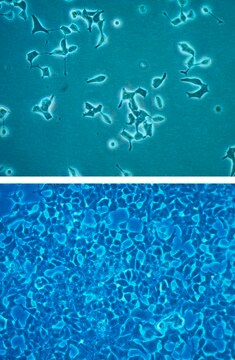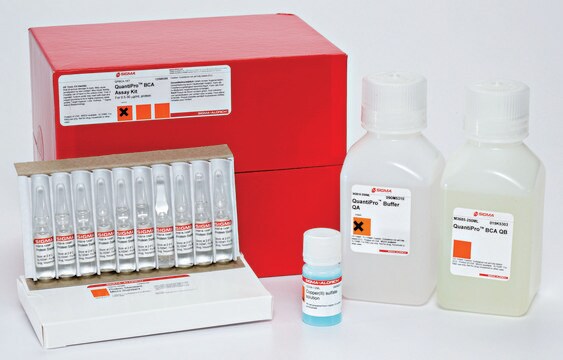SCC208
INS-1 832/3 Rat Insulinoma Cell Line
Rat
Synonym(s):
INS1 832/3, INS-1 (832/3), 832/3
About This Item
Recommended Products
product name
INS-1 832/3 Rat Insulinoma Cell Line, INS-1 832/3 rat insulinoma cell line is a useful model for insulin secretion regulation and pancreatic islet beta-cell function studies.
biological source
rat
technique(s)
cell culture | mammalian: suitable
shipped in
ambient
General description
Source:
INS-1 832/3 is a derivative of INS-1 cells originally established from an x-ray induced insulinoma in rat1. The INS-1 832/3 cell line is a subclone of INS-1 that was stably transfected with a CMV promoter-human insulin expression plasmid carrying a geneticin (G418)-resistance marker for selection .
Cell Line Description
Application
Metabolism
Diabetes
Quality
• Cells are tested negative for infectious diseases by a Mouse/Rat Comprehensive CLEAR panel by Charles River Animal Diagnostic Services.
• Cells are verified to be of rat origin and negative for inter-species contamination from mouse, chinese hamster, Golden Syrian hamster, human and non-human primate (NHP) as assessed by a Contamination CLEAR panel by Charles River Animal Diagnostic Services.
• Cells are negative for mycoplasma contamination.
Storage and Stability
Disclaimer
Unless otherwise stated in our catalog or other company documentation accompanying the product(s), our products are intended for research use only and are not to be used for any other purpose, which includes but is not limited to, unauthorized commercial uses, in vitro diagnostic uses, ex vivo or in vivo therapeutic uses or any type of consumption or application to humans or animals.
Storage Class Code
12 - Non Combustible Liquids
WGK
WGK 1
Flash Point(F)
Not applicable
Flash Point(C)
Not applicable
Certificates of Analysis (COA)
Search for Certificates of Analysis (COA) by entering the products Lot/Batch Number. Lot and Batch Numbers can be found on a product’s label following the words ‘Lot’ or ‘Batch’.
Already Own This Product?
Find documentation for the products that you have recently purchased in the Document Library.
Our team of scientists has experience in all areas of research including Life Science, Material Science, Chemical Synthesis, Chromatography, Analytical and many others.
Contact Technical Service







